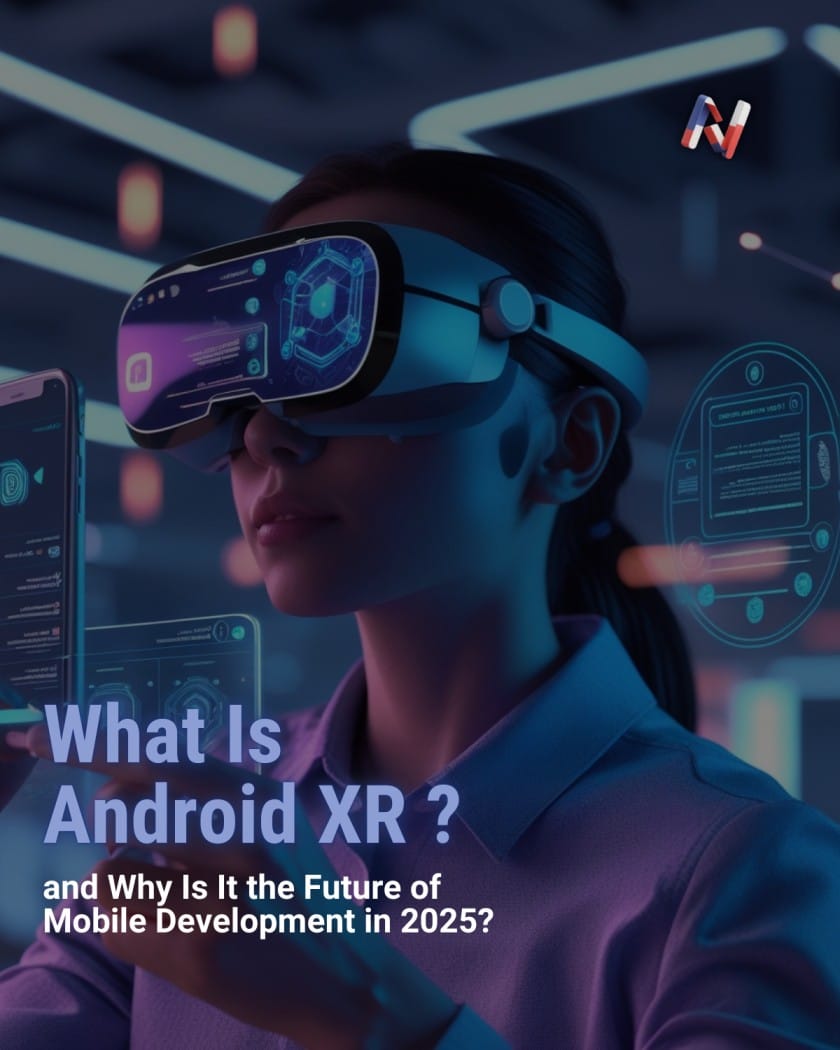What Is Android XR and Why Is It the Future of Mobile Development in 2025?

Extended Reality (XR) is rapidly transforming how we interact with digital content by blending physical and virtual environments into seamless experiences. In 2025, Google introduced Android XR, a unified platform built for immersive computing, signaling a monumental shift in mobile development. XR is no longer a futuristic concept-it's happening now, and Android XR is leading the charge.
Understanding XR: The Foundation of Immersive Technology
Extended Reality (XR) is an umbrella term that includes:
- Virtual Reality (VR): Entirely digital worlds experienced through headsets.
- Augmented Reality (AR): Digital overlays enhancing real-world views, often via smartphones or smart glasses.
- Mixed Reality (MR): Interactive experiences blending physical and digital objects.
XR isn’t just about entertainment. It's being used in education, healthcare, architecture, retail, manufacturing, and more. According to recent reports, global XR spending is expected to cross $100 billion by 2026, and mobile is playing a crucial role in this surge.
What Is Android XR?
Android XR is Google’s next-generation operating system tailored for XR hardware. Developed with Samsung and Qualcomm, Android XR provides a more robust, open, and developer-friendly alternative to Apple’s visionOS and Meta’s Horizon OS. With Gemini AI baked in, Android XR is designed to offer real-time contextual intelligence through smart assistants and natural language processing.
Key Highlights:
- AI-Native OS: Powered by Gemini AI for personalized, context-aware interactions.
- Open Source Advantage: Allows more device makers and developers to innovate freely.
- Hardware Flexibility: Compatible with VR headsets, AR glasses, and wearable displays.
- Built for Developers: Integrates seamlessly with Android Studio, Kotlin, Java, and the existing Android SDKs.
Trending Tools & Frameworks for Android XR Development
The ecosystem is expanding rapidly, and developers are turning to new tools that streamline XR development. Some trending and essential tools include:
- Sceneform SDK (for AR on Android): Allows 3D rendering and interaction within Android apps.
- ARCore: Google's platform for building AR experiences, now optimized for Android XR.
- Unity & Unreal Engine: The two leading game engines, now equipped with XR plugins and Android XR compatibility.
- Vulkan API: A high-performance graphics API used in rendering immersive XR visuals.
- OpenXR: A royalty-free standard developed by the Khronos Group to ensure cross-platform XR development.
- Blender & Polycam: Used for creating 3D assets and spatial modeling in XR applications.
- Niantic’s 8th Wall: A trending browser-based WebAR development platform with Android XR integration capabilities.
These tools are helping bridge the gap between mobile apps and immersive computing, making it easier than ever to transition from 2D interfaces to full XR environments.
Architecture of Android XR
At the core of Android XR is a modular architecture optimized for performance:
- XR Runtime Layer: Manages rendering, tracking, and spatial data.
- AI Middleware: Handles voice input, context processing, and AI logic via Gemini.
- Device Abstraction Layer: Ensures compatibility with multiple hardware vendors.
- Developer SDK Layer: Enables access to camera, location, motion sensors, and rendering engines like Vulkan or OpenGL.
This layered approach ensures that Android XR is scalable, secure, and performant on a variety of XR devices.
Use Cases: Real-World Applications of Android XR
Healthcare
- Simulations for surgery and diagnostics training.
- AR-guided physical therapy and remote patient monitoring.
Education
- Virtual field trips, interactive science experiments, and real-time language learning using AR glasses.
Retail
- Virtual fitting rooms and AR product demos increase user confidence and reduce return rates.Automotive
- Heads-up displays (HUDs) and training simulations for assembly line workers.
Architecture & Design
- Real-time 3D visualization of blueprints and home staging using AR.
Android XR allows these experiences to be more immersive, intuitive, and data-rich.
Android XR vs. the Competition
When comparing Android XR with Apple’s visionOS and Meta’s Horizon OS, several key differences emerge. Android XR stands out with its open ecosystem, which encourages third-party development and wider hardware support, unlike Apple’s tightly controlled visionOS. While Meta’s Horizon OS does allow some level of openness, it is still largely Meta-centric. Android XR offers seamless integration with popular developer tools like Android Studio, giving it an edge over visionOS which requires Xcode. In terms of AI, Android XR leverages Gemini AI, offering a deeply embedded and native AI experience, whereas Apple relies on Siri and some machine learning features, and Meta’s AI is still in early development stages. Hardware-wise, Android XR supports multiple partners like Samsung and Oppo, whereas visionOS is limited to Apple’s ecosystem, and Horizon OS mainly powers Meta’s own devices.
What’s Next? The Future of Android XR
Expect rapid innovation in:
- Spatial Commerce: Shopping in fully 3D environments.
- Smart Glasses Adoption: Wearables as the next mobile device.
- Cloud XR: Running complex XR workloads via edge computing.
- Context-Aware UI/UX: Interfaces that adapt to user behavior, location, and even emotion.
By 2026, experts predict that XR-capable mobile devices will outsell traditional AR/VR headsets, and Android XR is poised to be the dominant platform driving that growth.
Final Thoughts
Android XR is not just a new OS-it's a paradigm shift. It represents a future where mobile development transcends screens and buttons to become immersive, spatial, and intelligent. With trending tools, developer flexibility, and a growing ecosystem, Android XR empowers creators to build experiences that were once only possible in science fiction.
If you're a developer, designer, or tech enthusiast, now is the time to start exploring Android XR. The mobile world is going spatial-and Android XR is your gateway.
